Food-grade silicone is widely used in baby products, kitchen tools, and food storage containers. Thanks to its safety, heat resistance, flexibility, and non-toxic nature, it’s become a go-to material.
However, when customizing or choosing silicone products, many people overlook one key factor — Shore A Hardness. So how do you choose the right hardness for different food-contact silicone products?
In this guide, we’ll walk you through the basics, common use cases, and how to make the right selection.
What Is Shore Hardness?
Shore hardness measures how soft or firm a material is. In the silicone industry, the Shore A scale is most commonly used. Lower Shore A values mean the silicone is softer, easier to bend, and more compressible. Higher values mean the material is firmer, more resistant to pressure, and has stronger elasticity.
Typical Shore A Range for Food-Grade Silicone:
| Type | Shore A Range | Key Features |
| Very Soft | 20–30 | Soft like a baby pacifier, gentle in the mouth |
| Medium Soft | 40–50 | Easy to bend with moderate support |
| Firmer Type | 60–80 | Suitable for products that need more strength |
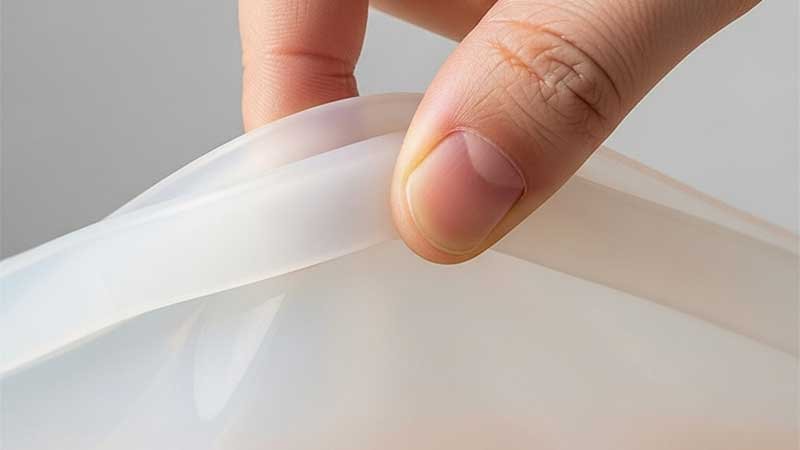
Why Is Hardness Selection So Important?
Choosing the right hardness is very important for food-grade silicone products. It affects how the product works, how it feels to use, how easy it is to make, and how much it costs.
When the hardness is right, the product fits its purpose well. A baby pacifier feels soft and gentle, while a baking tray feels firm and steady. This gives users a better experience.
If the hardness is wrong, the product may not work well or feel good. It can also cause problems in production, like more waste or lower quality. Customers might even question the product’s quality. This can hurt your brand.
How to Choose the Right Hardness Based on Product Type?
Different silicone products require different hardness levels. Here’s a quick guide for common food-contact silicone items.
| Product Type | Recommended Hardness (Shore A) | Why This Hardness Works |
| Baby pacifiers, teethers | 20–30 | Soft and safe for biting, no discomfort in the mouth |
| Silicone spoons, baby bowls | 30–50 | Flexible and elastic, easy for babies to hold and chew |
| Food storage bags, sealing lids | 40–50 | Good seal with enough softness for easy handling |
| Baking molds, cake molds | 50–60 | Keeps shape under heat, easy to release from mold |
| Silicone gloves, heat pads | 70–80 | Heat-resistant, anti-scald, and non-slip |
| Ice cube trays, chocolate molds | 40–50 | Firm enough for structure, soft enough for easy release |
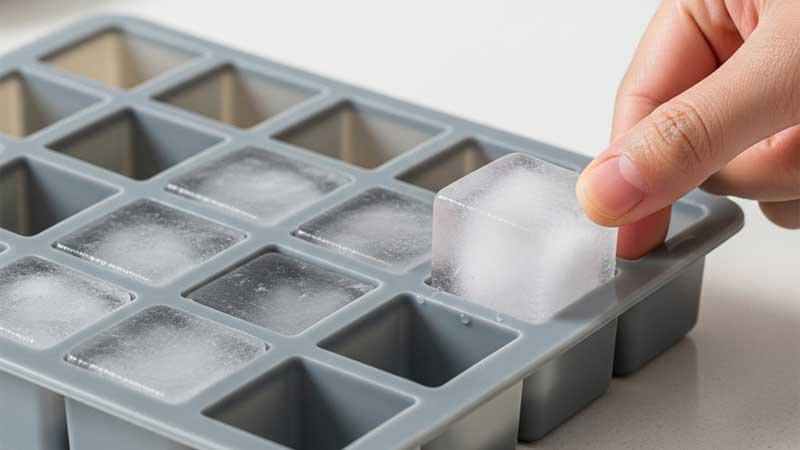
What Should You Consider When Choosing Silicone Hardness?
When picking the right Shore hardness for food-grade silicone, there are other key things to think about. These factors work together and any mistake might affect how well your product works, how it feels, or how easy it is to make.
Who Will Use the Product?
Different people need different levels of softness.
For babies or older adults, softer silicone (30A–50A) is usually better. It feels gentle and safe to use. A pacifier that’s too hard might hurt a baby’s gums.
For kitchen pros, like chefs using spatulas or baking tools, firmer silicone (50A–70A) is often better. It lasts longer and works well with strong or repeated use.
What’s the Product Shape?
The shape and thickness also matter.
Thin parts, like seals or straws, need firmer silicone (60A–70A) so they don’t bend or collapse easily.
Thicker parts, like bowls or cups, can use softer silicone (40A–60A) to feel better in the hand while staying strong.
What Does the Product Need to Do?
The function decides a lot.
If the product needs to fold, like a collapsible cup, softer silicone (30A–50A) works best.
If it needs to stick, like a suction bowl, use medium hardness (40A–60A) with good bounce-back.
For things that block heat, like oven mitts or cup sleeves, firmer silicone (60A–70A) gives better strength and heat resistance.
Can It Work With Your Molds?
You also need to match the hardness with your molds and machines.
Soft silicone can stick to the mold more. This makes demolding harder unless the mold is smooth and well-designed.
Harder silicone flows less during molding. So it might need higher pressure or heat to fill the mold properly.
That’s why you should check your production setup first before choosing the hardness. It helps you avoid problems and save time.
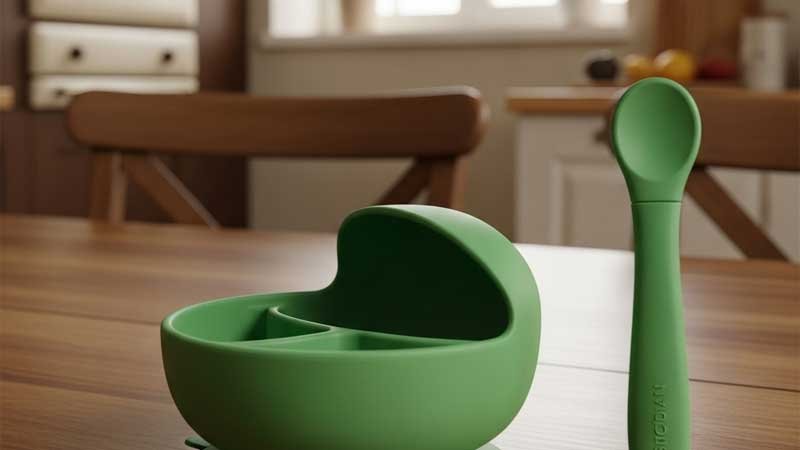
How to Test the Hardness of Food-Grade Silicone?
When developing or inspecting food-contact silicone products, hardness testing is a basic but essential step. It helps ensure the material meets design needs and affects how the product feels, functions, and performs safely.
Use a Shore A Durometer
Food-grade silicone is usually tested using a Shore A durometer. This is a standard device used to measure surface hardness quickly and reliably.
Testing steps:
- Prepare a silicone sample at least 6mm thick, with a flat and clean surface.
- Place the sample on a solid, level surface.
- Press the durometer needle vertically onto the sample.
- Read the value shown on the dial or digital screen (in Shore A units).
- Hold the device in place for 3 seconds per test point. Measure five points and take the average.
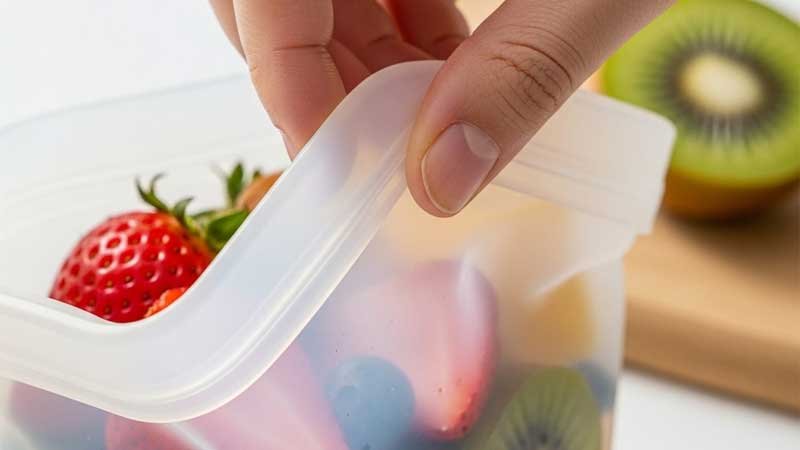
Factors That Can Affect the Result
- Temperature matters: The higher the temperature, the softer the silicone. This can lead to lower readings. Testing should be done at 23±2°C, under standard lab conditions.
- Sample thickness or soft backing: If the sample is too thin or placed on a soft surface, the needle won’t press correctly, and the reading may be too low.
- Timing control: Pressing too briefly or too long can also cause inconsistent results.
Differences Between Raw Material and Final Product
In real production, the hardness of raw silicone and the hardness of the finished product may not be exactly the same. This can happen due to:
- Changes in vulcanizing temperature or time during processing
- Use of color masterbatch, fillers, or other additives
- Product structure (such as thickness or hollow parts) affecting how hardness feels in specific areas
That’s why it’s important to test materials, semi-finished parts, and final products in multiple rounds before mass production, to make sure the hardness stays consistent.
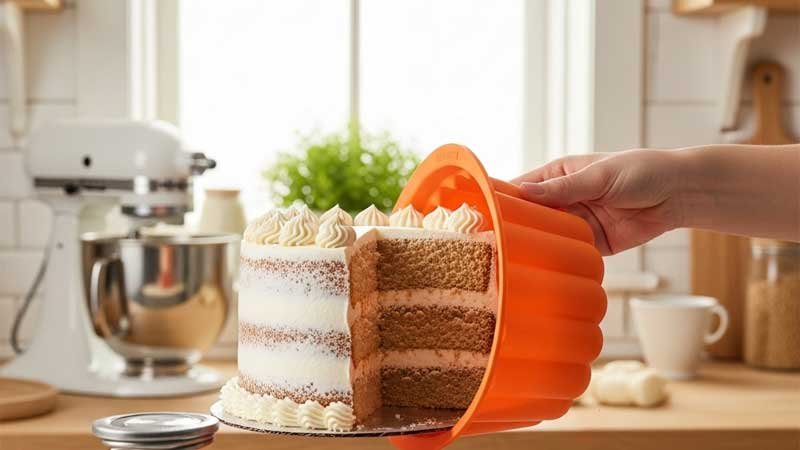
Conclusion
There’s no one-size-fits-all rule for selecting silicone hardness. The key is to consider how the product will be used, who will use it, what processing methods are involved, and how the material behaves. Before going into mass production, we recommend testing samples, gathering user feedback, and verifying performance to confirm the best hardness.
Getting ready to develop a food-grade silicone product? Feel free to reach out to us. We offer full support, from material advice and hardness selection to mold optimization.